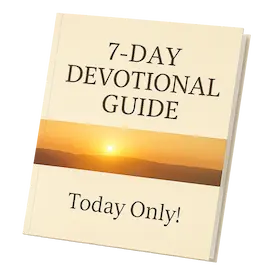Where Is the Garden of Eden Located?
The Bible treats the Garden of Eden as a real location. Jesus Himself referenced the Genesis account, affirming its significance (Matthew 19:4-5).
Where Is the Garden of Eden in the Bible
The Garden of Eden’s location is specifically described in Genesis 2:10-14, which provides details about the rivers flowing in and around it:
- Pishon River – Said to wind through the land of Havilah, known for its gold and precious resources.
- Gihon River – Described as flowing through the land of Cush.
- Tigris River – Runs along the east side of Assyria (Ashur).
- Euphrates River – Mentioned without additional description, likely because it was already well known.
These rivers provide clues, but interpretations vary due to translation differences. Some believe Genesis describes one river that splits into four, while others suggest four rivers merging into one in Eden. The Hebrew word for "heads" in Genesis 2:10 can mean confluences where rivers join rather than separate.
Another challenge in pinpointing Eden’s location is the possibility that the Great Flood drastically altered the earth’s geography. If the flood reshaped rivers and landscapes, it would explain why some rivers, like the Pishon and Gihon, are difficult to identify today.
Nevertheless, the presence of the well-known Tigris and Euphrates rivers suggests Eden was in the Mesopotamian region, near the Persian Gulf. Some historical sources also reference Qurna, Iraq, where a shrine marks a site believed to be close to Eden’s location.
What Did the Garden of Eden Look Like?
The setting of the Garden of Eden can be inferred from several passages in the book of Genesis. The garden was irrigated by a river that flowed through it, according to Genesis 2:6, 10. All of the trees were beautiful and useful for food (Genesis 2:9), but God told Adam and Eve not to eat from the tree of the knowledge of good and evil (Genesis 2:17). Adam and Eve were made in God's likeness (Genesis 3:8) and they lived in innocence until they disobeyed God's order (Genesis 3:7–13, 22).
The curse that God imposed on humanity and the earth as a result of Adam and Eve's disobedience teaches us a lot about what happened in Eden as well. God supplied for all of Adam and Eve's needs before they disobeyed, and they enjoyed a painless relationship and light labor tending to the garden.
Adam and Eve had a wonderful paradise during their brief time in the Garden of Eden, and everything that was there before and everything that was taken away afterward assisted in painting that picture.
Get Closer to God Today
4.9
Average Rating
|Over 5 Million Downloads
Does the Garden of Eden Still Exist?
The Bible, as God’s inspired word, provides historical accounts of real events, including the existence of the Garden of Eden. Genesis describes Eden as a paradise created by God for Adam and Eve before their fall into sin. While many believers are eager to locate Eden, the question remains: Does Eden still exist today?
The first thing to consider is that Genesis was written by Moses about 2,500 years after creation, long after the Great Flood had reshaped the earth. Some translations of Genesis 2 describe the four rivers of Eden as still existing in Moses’ time, but this is debated among scholars. The Hebrew text does not necessarily imply present-day existence but could refer to historical landmarks known to Moses’ audience.
Another challenge in locating Eden is the immense geological impact of the Flood. Creation geologists highlight that the global flood would have drastically altered the earth’s surface, erasing pre-Flood topography and burying ancient landscapes under miles of sediment. Even if the region of Eden were identifiable, the actual site may be deeply buried or completely destroyed.
Additionally, while the Euphrates and Tigris rivers still exist, it is uncertain whether they are the same rivers mentioned in Genesis. The original rivers could have been destroyed or renamed post-Flood, much like how settlers renamed new lands after their homelands.
Given these factors, it is highly unlikely that the Garden of Eden still exists in its original form. While its exact location remains unknown, its significance as the birthplace of humanity and God’s original design for creation remains foundational to biblical faith.
Was the Garden of Eden Destroyed?
The short answer is most likely yes. As it was mentioned, it would have been unlikely for the Garden of Eden to withstand the Flood.
The Flood of Noah produced complete destruction upon the earth. Only those who were in the ark survived. The rain continued for 40 days and the earth was covered with water for month upon month.
No normal plant life or vegetation, other than those made to exist underwater, would have survived the flood. This would include the Garden of Eden. It was a physical garden made upon a physical earth for man to tend, therefore it would have been destroyed in the flood.
Where Do Mormons Believe the Garden of Eden Is?
The belief and teaching of Joseph Smith Jr., the founder of Mormonism and the Church of Jesus Christ of Latter-day Saints, placed the Garden of Eden in or near Independence, Missouri. Adam and Eve eventually settled in Daviess County, which is about 70 miles apart.
After Joseph Smith Jr. established the church in New York in the 1820s, he travelled to Ohio and Pennsylvania before settling on the frontier of western Missouri in 1838. During Smith's early 1830s travel to Missouri, he became convinced that Eden was located in Jackson County.
The contemporary church, however, recognizes that there is no "primary source documentation for all of Joseph Smith’s revelations or doctrinally related declarations" that directly address this assertion. Many members of the Mormon faith moved to Jackson County, Missouri in order to be closer to this sacred location.
Gradually, the LDS community was expelled from the region due to conflicts between the burgeoning Mormon population and the more established inhabitants. They moved to a part of Daviess County that is south of Jameson, Missouri. Near the Grand River in Daviess, one of Smith's early apostles Lyman Wight had constructed a house and ferry. Upon visiting Wight's property, Smith asserted that he had a vision of Adam and Eve relocating there from Eden following their expulsion.
Smith announced that the land would be called Adam-ondi-Ahman and would be the location where the righteous would assemble before the end of the world. He declared that the land will be a Mormon community. There was talk of constructing a temple and the population had increased to 1,500 Mormons by the summer of 1838. The temple, however, never came to be.
How Big Was the Garden of Eden?
The Bible does not specify the exact size of the Garden of Eden. Various interpretations and traditions offer differing perspectives on its dimensions.
Some Jewish sources suggest that "Egypt is 400 parasangs square, and is one-sixtieth the size of Cush [Ethiopia]. Cush is one-sixtieth of the world [inhabited earth], the Gan [Garden] being one-sixtieth of Eden, and Eden one-sixtieth of Gehinnom." This implies that the Garden of Eden was considered vast, though these measurements are more allegorical than literal.
In modern discussions, some scholars propose that Eden encompassed a region of "considerable size" in Mesopotamia, possibly aligning with the Fertile Crescent. However, these theories are speculative, as the Bible does not provide explicit details regarding the garden's size.
Ultimately, the exact dimensions of the Garden of Eden remain unspecified in biblical texts, leaving its size open to interpretation and scholarly debate.
Get Closer to God Today
4.9
Average Rating
|Over 5 Million Downloads
The Garden of Eden Story
In order to explain how humans came to know sin, suffering, and death, the biblical account of the Garden of Eden is a theological allegory that makes use of mythological elements. From dust, God formed Adam, and then he placed him in Eden, where he saw a "tree of life" and the prohibited "tree of the knowledge of good and evil" (2:4-3:24).
With the sole commandment to refrain from eating from the tree of knowledge of good and evil, God charged Adam with caring for the garden and giving names to the creatures living there. Adam was put to sleep so that God could take a rib from him and create Eve, his partner in the garden. They were both completely innocent, and they lived their lives as husband and wife without shame.
Unfortunately, Eve fell for the serpent's tricks in the garden and ate from the forbidden fruit, even though she gave some to Adam. Their eyes had just awakened, and they saw that they were completely exposed, so they hid between fig leaves. In response to their sin, God announced their punishments: birth pains and subjection to man for the woman and a cursed earth to work and sweat for their survival for the man.
After clothing them in animal skins, God banished them from paradise and sent an angel bearing a sword of fire to guard the entrance in case they dared to return.
4 Bible Verses About The Garden of Eden
Let’s finish by taking a look at key points of Eden’s story through verses from the Bible.
- Genesis 2:8-9 – "And the Lord God planted a garden in Eden, in the east, and there he put the man whom he had formed. And out of the ground the Lord God made to spring up every tree that is pleasant to the sight and good for food. The tree of life was in the midst of the garden, and the tree of the knowledge of good and evil."
- Genesis 2:10-14 – "A river flowed out of Eden to water the garden, and there it divided and became four rivers. The name of the first is the Pishon. It is the one that flowed around the whole land of Havilah, where there is gold. And the gold of that land is good; bdellium and onyx stone are there. The name of the second river is the Gihon. It is the one that flowed around the whole land of Cush. And the name of the third river is the Tigris, which flows east of Assyria. And the fourth river is the Euphrates."
- Genesis 2:15-17 – "The Lord God took the man and put him in the Garden of Eden to work it and keep it. And the Lord God commanded the man, saying, 'You may surely eat of every tree of the garden, but of the tree of the knowledge of good and evil you shall not eat, for in the day that you eat of it you shall surely die.'"
- Genesis 3:1-6 – "Now the serpent was more crafty than any other beast of the field that the Lord God had made. He said to the woman, 'Did God actually say, "You shall not eat of any tree in the garden"?' And the woman said to the serpent, 'We may eat the fruit of the trees in the garden, but God said, "You shall not eat of the fruit of the tree that is in the midst of the garden, neither shall you touch it, lest you die."' But the serpent said to the woman, 'You will not surely die. For God knows that when you eat of it your eyes will be opened, and you will be like God, knowing good and evil.' So when the woman saw that the tree was good for food, and that it was a delight to the eyes, and that the tree was to be desired to make one wise, she took of its fruit and ate, and she also gave some to her husband who was with her, and he ate."
Genesis 3:22-24 – "Then the Lord God said, 'Behold, the man has become like one of us in knowing good and evil. Now, lest he reach out his hand and take also of the tree of life and eat, and live forever—' therefore the Lord God sent him out from the Garden of Eden to work the ground from which he was taken. He drove out the man, and at the east of the Garden of Eden he placed the cherubim and a flaming sword that turned every way to guard the way to the tree of life."










